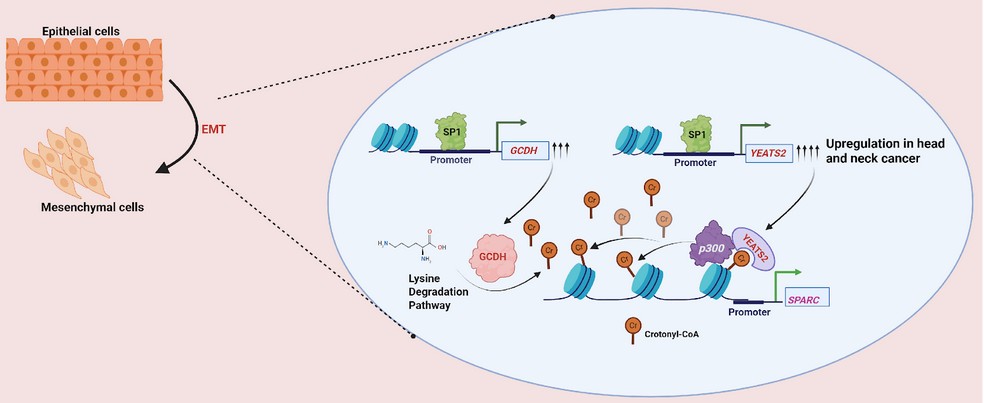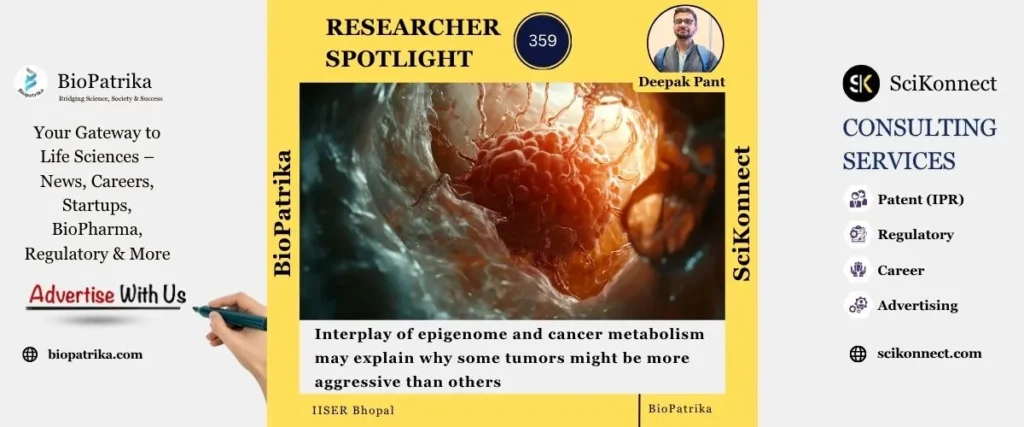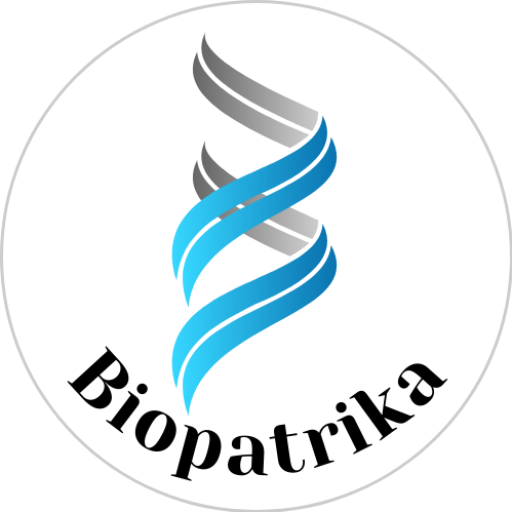Research Summary: This research investigates the role of YEATS2 and GCDH in regulating epithelial-to-mesenchymal transition through histone crotonylation in head and neck cancer.
Author interview

Deepak Pant has recently completed his PhD from Prof. Sanjeev Shukla’s lab at IISER Bhopal. His research explores the interplay between epigenetics and metabolism in driving epithelial-to-mesenchymal transition in head and neck cancer.
Linkedin: https://www.linkedin.com/in/deepak-pant-75a3071aa/
Twitter: https://x.com/DeepPant94
Lab: Prof. Sanjeev Shukla, Indian Institute of Science Education and Research Bhopal (IISER Bhopal)
Lab social media: https://x.com/ERPLab_IISERB
What was the core problem you aimed to solve with this research?
Epithelial-to-mesenchymal transition (EMT) is a crucial process in the progression of solid tumors. EMT helps epithelial cells change into a more motile and invasive type, which lets them invade through nearby tissues and spread to other parts of the body. This extensive phenotypic reprogramming is caused by equally widespread changes in gene expression, which are tightly regulated by the cell’s epigenetic landscape. Addition or reduction of epigenetic marks like DNA methylation and histone modifications can have a significant effect on how EMT-promoting genes are expressed. Research is increasingly showing that cellular metabolism is also very important for controlling gene expression. This is because metabolites produced during metabolic processes can be used as substrates or cofactors by epigenetic enzymes. However, the specific mechanisms governing the metabolic–epigenetic interplay during EMT remain inadequately elucidated. This study investigates the interplay between metabolism and epigenetic regulation to clarify how their interaction facilitates the enhancement of EMT in cancer cells.

How did you go about solving this problem?
We began with a bioinformatic screen to identify epigenetic regulators that are upregulated in head and neck cancer and associated with poor patient survival. This analysis highlighted YEATS2 (YEATS domain-containing 2), a histone reader known to recognize multiple acylation marks, including histone acetylation and crotonylation. Through an integrated approach combining next-generation sequencing and experimental validation, we demonstrated that YEATS2 promotes epithelial–mesenchymal transition (EMT) in head and neck cancer. Mechanistically, YEATS2 recruits the histone acyltransferase p300 to the promoter of the EMT-associated SPARC gene, leading to increased deposition of histone H3K27 crotonylation marks and subsequent upregulation of SPARC expression. The metabolite required for this modification, crotonyl-CoA, is generated by the metabolic enzyme glutaryl-CoA dehydrogenase (GCDH). Notably, depletion of either YEATS2 or GCDH reduced histone crotonylation levels and suppressed SPARC expression, highlighting their cooperative role in driving EMT.
We reveal how cancer metabolism hijacks the epigenome via histone crotonylation, a fundamental step that dictates the metastatic potential of tumors. — Prof. Sanjeev Shukla
How would you explain your research outcomes (Key findings) to the non-scientific community?
Not all tumors are created equal. Some tumors begin metastasizing much more rapidly and aggressively. In the era of precision medicine, it is necessary to study the molecular differences between individual cancer patients, and try to correlate it with the outcome of their disease. This has led to a growing appreciation for the role of systems biology in cancer research. Systems biology is an interdisciplinary field that involves integration of diverse cellular and molecular data such as gene expression, proteomics, epigenomics, and metabolomics to provide holistic view of complex biological processes. In our study, we have attempted to study the interaction between two important hallmarks of tumor progression, epigenetics and metabolism. We have tried to dissect the influence of metabolic state of cancer cells on the epigenome and how this crosstalk helps drive epithelial-to-mesenchymal transition (EMT), a pivotal step in tumorigenesis. Studying the interplay between metabolism and the epigenome in cancer cells can offer comprehensive insights into cancer progression and aid in the identification of novel, more effective therapeutic targets.
What are the potential implications of your findings for the field and society?
While our findings address a fundamental cellular process in cancer, they hold potential for long-term translational impact. Understanding the interplay between two key drivers of tumorigenesis, metabolism and epigenetics, is essential for a holistic view of cancer and the development of precision therapies. One of the potential ways in which this study can be translated is by exploring the H3K27cr levels in tumor biopsies as a potential biomarker. Also, checking crotonyllysine levels in blood might offer a less invasive method to track disease progression or response to targeted therapy. However, since our results are preliminary, substantial follow-up work is needed to translate them into clinical applications.
What was the exciting moment during your research?
Since YEATS2 is a histone reader protein, it cannot itself catalyze the addition of histone modifications such as crotonylation. Therefore, we sought to identify the histone writer responsible for YEATS2-mediated histone crotonylation. Analysis of publicly available datasets indicated that p300 might serve as the potential writer in this process. To test this, we performed co-immunoprecipitation experiment to examine the physical interaction between YEATS2 and p300. Although our expectations were modest, we were thrilled to discover that p300 directly binds to YEATS2, a finding that marked one of the most exciting moments in our study.
Paper reference: Deepak Pant, Parik Kakani, Rushikesh Joshi, Abin Sabu, Shruti Agrawal, Atul Samaiya, Sanjeev Shukla (2025) Interplay of YEATS2 and GCDH regulates histone crotonylation and drives EMT in head and neck cancer. eLife 14:RP103321. https://doi.org/10.7554/eLife.103321.3

Explore more
🎤 Career – Real career stories and job profiles of life science professionals. Discover current opportunities for students and researchers.
💼 Jobs – The latest job openings and internship alerts across academia and industry.
🛠️ Services – Regulatory support, patent filing assistance, and career consulting services.




